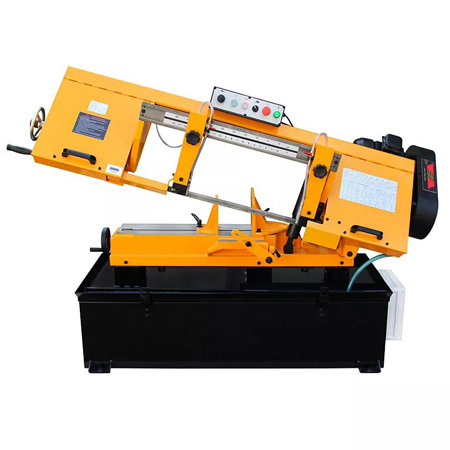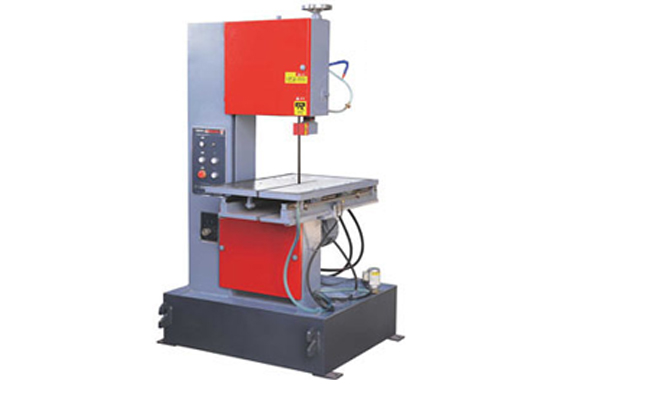GS-280 Angle Cutting BAND SAW MACHINE
Cutting Capacity :
If you’re working with metal—whether it’s steel, aluminum, or something tougher—you need the right tool to make clean, precise cuts. A metal band saw is one of the most efficient ways to slice through metal stock, pipes, and bars without the hassle of grinding or overheating your material.
But not all band saws are the same. Some are built for heavy-duty industrial jobs, while others are better suited for small workshops. If you’re in the market for one, this guide will help you pick the best metal band saw for your needs.

Types of Metal Band Saws
1. Horizontal Band Saws
These saws are workhorses in metal shops. The blade moves horizontally, and the cutting head lowers onto the material. They’re great for cutting long stock, bars, and pipes.
Best for: Production shops, welding shops, and fabrication.
Pros: Consistent cuts, handles large material, can run unattended.
Cons: Takes up floor space, not ideal for intricate cuts.
2. Vertical Band Saws
Vertical band saws have the blade positioned upright, allowing for more detailed and curved cuts. They’re versatile but usually require manual feeding.
Best for: Custom metalwork, detailed cuts, smaller shops.
Pros: More control, can cut curves, compact size.
Cons: Slower for long cuts, not ideal for thick metal.

3. Portable Band Saws
These handheld or benchtop saws are lightweight and easy to move around. They’re perfect for job sites or small projects.
Best for: Contractors, plumbers, HVAC work.
Pros: Lightweight, portable, good for tight spaces.
Cons: Limited cutting capacity, less stable than stationary saws.
4. Dual-Purpose (Wood & Metal) Band Saws
Some band saws can switch between wood and metal cutting by adjusting blade speed. They’re a good choice if you work with both materials.
Best for: Hobbyists, general workshops.
Pros: Saves space and money.
Cons: Not as powerful as dedicated metal saws.
Key Features to Consider
1. Blade Speed & Power
Metal cutting requires slower blade speeds than wood. Look for a saw with variable speed control (around 80-300 FPM for metal). More horsepower (HP) means it can handle thicker materials.
2. Cutting Capacity
Check the throat depth (distance from blade to frame) and maximum cutting height to ensure it fits your material size.
3. Blade Type & TPI (Teeth Per Inch)
Bi-metal blades are durable and handle most metals.
Carbide-tipped blades last longer but are pricier.
Lower TPI (6-10) for thick metal.
Higher TPI (14-24) for thin metal and smoother cuts.
4. Build Quality & Stability
A sturdy frame reduces vibration for cleaner cuts. Cast iron or heavy steel bases are best for stationary models.
5. Coolant System
Some saws have built-in coolant to reduce heat and extend blade life. Essential for high-volume cutting.
6. Additional Features
Automatic shutoff – Stops the saw when cutting is done.
Vise or clamps – Holds material securely.
Miter gauge – For angled cuts.
A good metal band saw is an investment. Whether you need a heavy-duty horizontal saw for production work or a compact vertical model for detailed cuts, choosing the right one will save you time, money, and frustration.
Think about your most common jobs, set a budget, and pick a saw that won’t let you down.
Got a favorite band saw or a tip for new buyers? Drop a comment below!
Cutting Capacity :
Cutting Capacity :